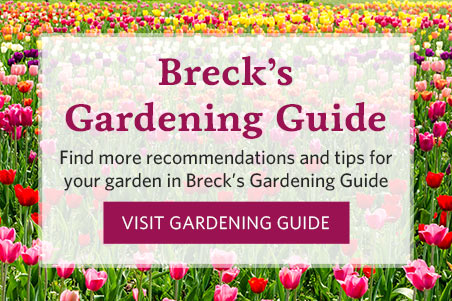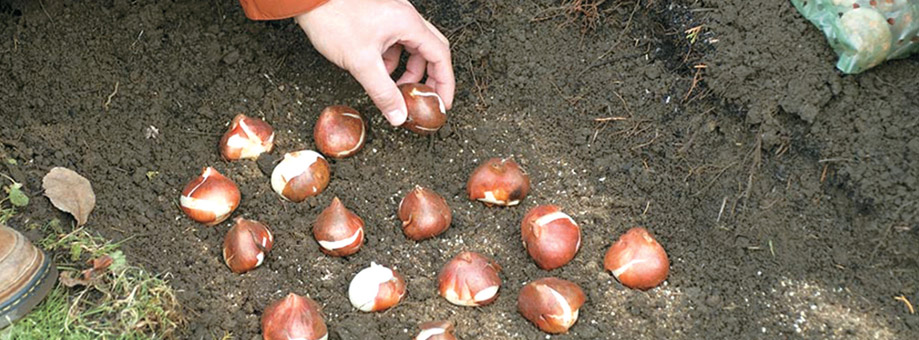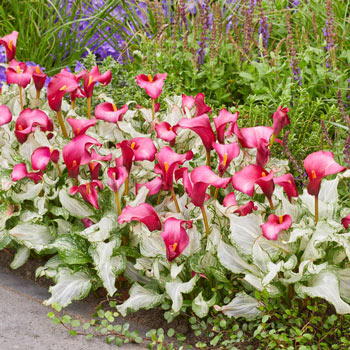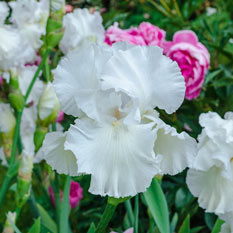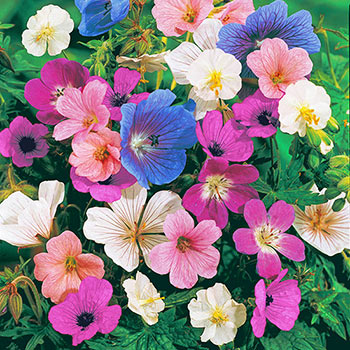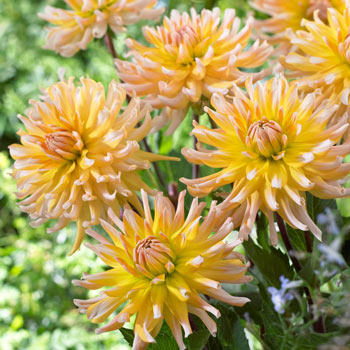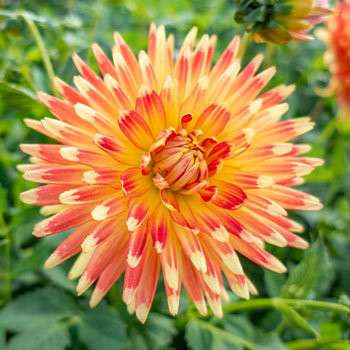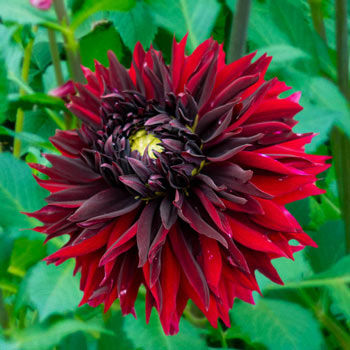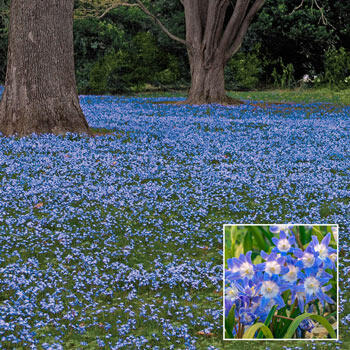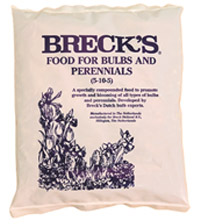 Gardeners have relied on soil amendments and fertilizers since the days of early agriculture. But, fertilizer isn't just for farming: flower fertilizer for plants and bulbs can make healthier plants and more plentiful blooms. Finding the right bloom fertilizer for your flowering plants and bulbs can take your plants from surviving to thriving. Bloom fertilizer, as the name suggests, creates bigger, brighter, and more fragrant blooms on your favorite flowering plants, and can encourage your plants to rebloom. So, why do plants and bulbs need fertilizers, and what type makes sense for your garden? Read on to find out more.
Gardeners have relied on soil amendments and fertilizers since the days of early agriculture. But, fertilizer isn't just for farming: flower fertilizer for plants and bulbs can make healthier plants and more plentiful blooms. Finding the right bloom fertilizer for your flowering plants and bulbs can take your plants from surviving to thriving. Bloom fertilizer, as the name suggests, creates bigger, brighter, and more fragrant blooms on your favorite flowering plants, and can encourage your plants to rebloom. So, why do plants and bulbs need fertilizers, and what type makes sense for your garden? Read on to find out more.
Why Plants & Bulbs Need Fertilizers
Both perennials and flower bulbs can make use of the right fertilizer. Flowering perennials and bulbs pull nutrients from the ground, and, while compost and other organic amendments make for a healthier plant, they aren't optimized to encourage blooming.How to Choose a Flower Fertilizer
What do the labels on fertilizer packaging mean? And how can you choose the right product for your flowers? Let's look at fertilizer label numbers, and go through some common selling points of different types of fertilizer.Commercial fertilizer labels feature three bold numbers: you'll see fertilizer labeled 24-8-16 or 10-10-10. The first number indicates the percentage of nitrogen per pound, the second number is the percentage of phosphate, and the third number is the percentage of potash. So, the primary nutrients in the fertilizer are labeled this way: nitrogen-phosphorus-potassium. Keep those numbers in mind as you think through which types of fertilizer your plants need.
Complete Fertilizer
Most basic garden fertilizers send a balanced selection of these three important nutrients to your plants, or lean a little heavier on nitrogen. Those general garden fertilizers are suitable for any type of plant: ornamental, vegetable, even trees and bushes. However, complete fertilizers may contain too much nitrogen for optimal blooming. If you notice that your flowering plants have lush, leafy foliage, but few flowers, shift away from nitrogen-heavy generics, and toward a bloom fertilizer with a greater ratio of potassium.Flowering Plant Fertilizer
Flowering plant fertilizer, bloom fertilizer, or rose fertilizer aims to get your flowering plants producing the biggest, brightest blooms possible. Flowering plant fertilizers typically achieve this through a higher level of potassium. Potassium fuels and regulates plants' fruit and seed development process.You'll see fertilizers with numeric labels indicating that phosphorus -- the middle number -- is more plentiful than nitrogen or potassium. A common fertilizer for blooming plants is a 15-30-20 formulation.Organic Fertilizer
What is organic fertilizer, and what is organic fertilizer made out of? Organic fertilizers include manure, compost, bone meal, and other materials that come straight from animal and plant sources. Organic fertilizers aren't always labeled with N-P-K ratios, as those values aren't always exact. Organic fertilizers typically contain lower concentrations of plant nutrients than do inorganic fertilizers. And, many of those nutrients need to be broken down by soil microbes and fungi before the nutrients are usable by plants. Compared to commercial fertilizer, organic fertilizers tend to serve as slow-release, lower-nutrient fertilizers. And, compost and manure can improve the health of your soil microbes, making the soil easier to work and easier to drain.Fertilizer for Bulbs
Some gardeners are surprised to learn that flower bulbs need fertilizer. While each bulb is its own "plant factory" -- with the nutrients and structures needed to start that tulip, daffodil, or dahlia -- using flower fertilizer can also help your flowering bulbs flourish. Bulb food can be mixed in with the soil when bulbs are planted, and can be added to the soil in the spring to perk up your flowering bulbs as they begin the work of growing.Slow-Release Fertilizer
Slow release fertilizers release a smaller stream of nutrients, over a longer period of time. The slow release helps prevent improper dilution and fertilizer burn, and keeps your soil fertilized longer. Inorganic fertilizers typically use a coating to create the slow release effect. Organic fertilizers are also slow to release nutrients, as those nutrients must be naturally broken down.When Flower Fertilizer Should Be Used
Most flowers should be fertilized in early spring, so that the plants receive a boost of energy as they begin to grow, and a second application in the summer. Avoid fertilizing in the fall, as fertilizer can keep your perennials and bulbs growing when they need to prepare for winter dormancy in order to survive the cold season.Tips on How to Fertilize Plants & Bulbs
Fertilizer application rules according to the type of fertilizer and the type of plants or bulbs being used. Fertilizer is typically packaged in liquid, granular, or pellet form; organic compost and manure typically sold by the pound.Liquid fertilizer requires dilution; that dilution ratio is typically included with the packaging. Apply those fertilizers to the soil's surface, not directly onto your plants. Water your plants both before and after using liquid fertilizers.
Granular fertilizers and organic fertilizers can be added into the soil when you plant your bulbs or bare roots, however, you should avoid having fertilizer or compost come into direct, undiluted contact with the plants or bulbs. Instead, mix those materials with the soil.
Time-release fertilizers are sometimes sold as pellets or spikes. Those can be sprinkled over the soil, or planted into the soil, per the manufacturer's instructions.
While fertilizer can help your plants develop bigger and more frequent flowers, too much flower fertilizer can harm plants. Too much nitrogen causes plants to produce foliage rather than flowers; too much phosphorus or potassium can limit the absorption of certain micronutrients. And, excess fertilizer in lawns and gardens can run off into storm sewers, creeks, and rivers, causing damage to the local ecosystem. With a little planning ahead, you can assess the right amount -- and correct type -- of fertilizer for your garden!
Planting and Care of Bulbs: Preparing Soil
Back to Index
Planting and Care of Bulbs: Planting Location






